Installing a door closer on an entrance metal door
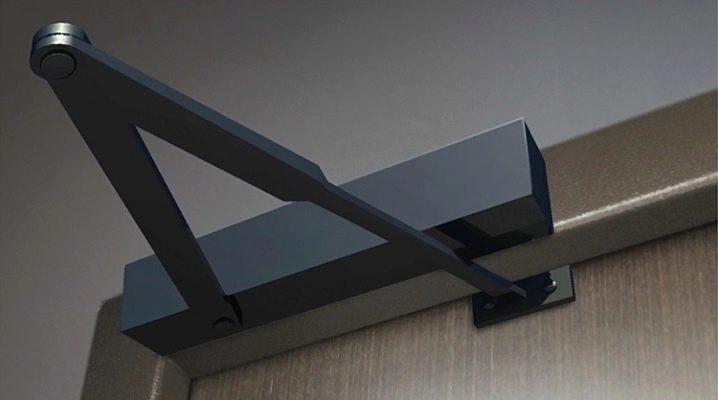
Installing a door closer on a metal door has its own nuances. This useful device helps to ensure that heat loss is reduced and must also have sufficient force to close the heavy sash tightly. But how to properly install the mechanism on the front door?
Do-it-yourself installation of the device takes relatively little time and does not cause much trouble if you follow the rules. A simple set of tools, some experience with them, an understanding of the principles of operation of the mounted mechanism will help the home master to cope with the work.
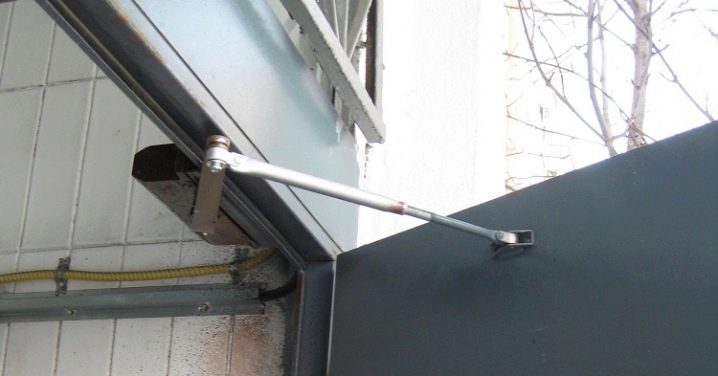
Why install a door closer?
Installing a closer on a metal door is, although a forced, but absolutely justified measure. A mechanical element attached to the inner side of the leaf helps to ensure smooth closing of the sash, prevents it from skewing, and reduces the intensity of wear.
Installation of a closer is necessary in the entrances of apartment buildings, where such a component helps to avoid heat loss, reduces noise load.
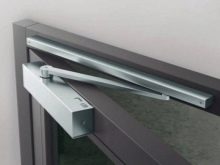
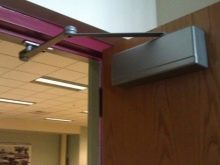
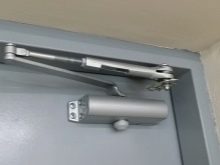
Without fail, additional components of this type are installed exclusively on door structures:
- mounted in public places where a high intensity of the flow of people is expected;
- equipped with access control systems to the facility;
- fire-fighting purposes;
- used for evacuation purposes.
When selecting door closers for doors that are not equipped with them by default, it is imperative to focus on the weight and dimensions of the structure. Otherwise, there is a high probability that the wear rate of the parts of the auxiliary mechanism will be too high.
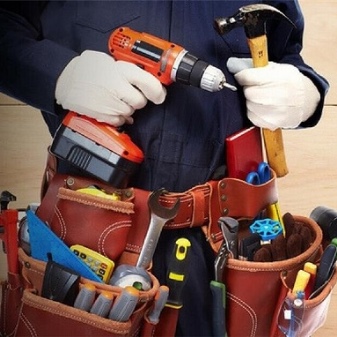
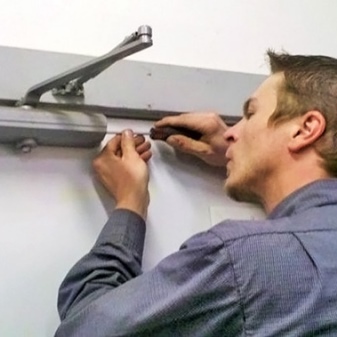
What points need to be considered
To correctly install a door closer on an iron door, you need to decide on its technical characteristics when choosing a device. Some models - such as floor structures - need to be pre-assembled. Their installation is taken into account even at the design stage.
In ordinary houses and at non-residential infrastructure, overhead options are more often used - they are attached outside, in the upper part of the door leaf. In addition, there are hidden options installed in the door frame or the canvas itself. As a rule, such systems are installed by the manufacturer, and only require adjustment at the installation stage.
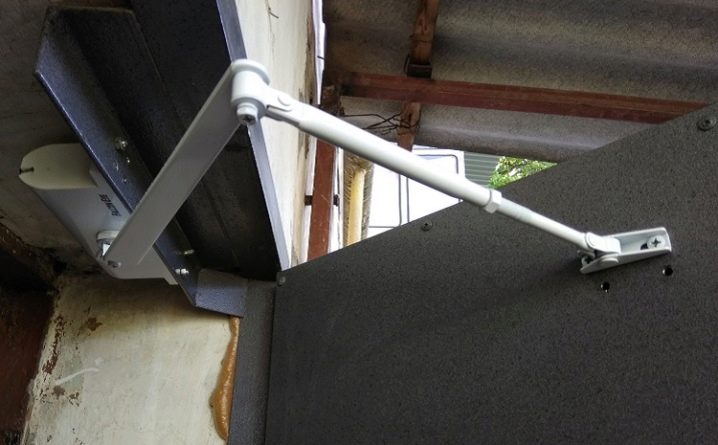
For self-attachment to the surface of the door leaf, only surface-mounted closers are suitable.
Their installation on the front door is most often carried out with fastening to a box beam. In most cases branded products are provided with a detailed explanation from the manufacturer regarding the choice of fixation points for the product... For successful installation, it is imperative to adjust the canvas itself in advance. It should have an easy move on the hinges, enter the opening without distortions.

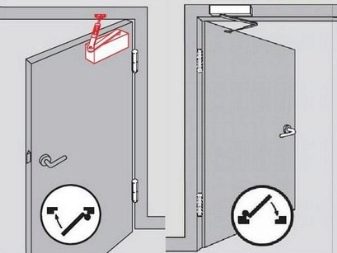
Types of mechanisms
When planning to mount a door with a door closer with your own hands, you should take into account some of the features of commercially available products.
The most common technological solutions are as follows.
- Gear, with toothed rack and linkage... They have an oil type of grease, which can thicken when used in frost. Recommended for installation in interior spaces and inside entrances.Suitable for use with an external wall mount when average winter temperatures do not drop below zero degrees. The mechanism itself is characterized by smooth movement and high clamping force.
- Cam closers have a piston element with a shaft inside, as well as a spring with an adjusting screw. Here, a slider rod is used, which makes it possible to soften the closing of the sash, to make it smoother. Such mechanisms are designed for operation in combination with a surface-mounted or mortise type of fastening. Floor models are also most often equipped with a cam mechanism.
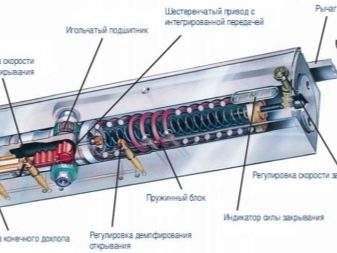
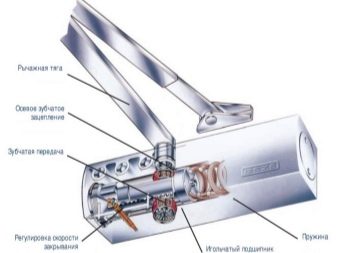
Choosing a mounting method
Depending on whether the design provides for external opening or swinging of the sash inside the room, fastening the closer can be done in one of three ways that exist at the moment.
- Standard... The lever is attached to the door frame in the lintel area. The main part of the closer is fixed on the surface of the canvas.
- Reverse or top... In this case, the working element is attached to the lintel, and the lever part is fixed to the door leaf, providing the necessary force during its installation. In this case, the lever is located perpendicular to the box bar at the top.
- Parallel... Installation is carried out using a mounting bracket, the arm structure is fixed parallel to the top bar.
An important rule of thumb is that the arm attachment always determines the installation method. To open the door towards yourself, you must fix it on the surface of the door frame. For swing doors with external sash fastening, the lever is fixed to the leaf. The width of the door should be weighed against the force and weight. The heaviest models are equipped with two door closers.
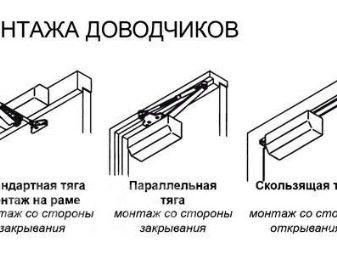
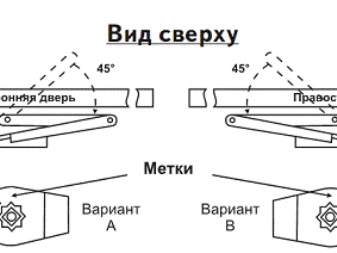
Fixing the closer on the door leaf
A street doorway in apartment buildings, office buildings often serves as a source of heat loss. The closer helps to prevent them.

You can fix it correctly using a simple algorithm of actions.
- Fix the template part of the part to the fixing point at a given height using adhesive tape.
- Using a center punch, mark the places where the mounting holes will be located - there are 6 of them in total (2 for the lever, 4 for the main mechanism).
- Drill through holes in the locations of the marks for the subsequent installation of the fittings.
- Fasten the lever part of the closer to its location (on the canvas or jamb).
- Fix the housing.
- Connect the second part of the rod, which was not previously fixed, with the axis of the closer itself.
- Adjust the length until the lever is directed strictly perpendicular to the door leaf when closed.

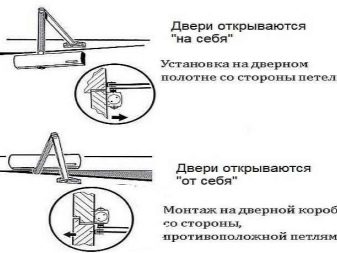
Adjustment and setting
It is not enough to fix the product correctly, it still needs to be adjusted. For this, special adjusting screws are included in the design. When installed, their correct direction is oriented towards the surface of the box beam. There are two such screws in total, they allow you to determine and fix the desired speed of movement of the web for each of the operating modes. When adjusting, be careful not to exert too much effort.
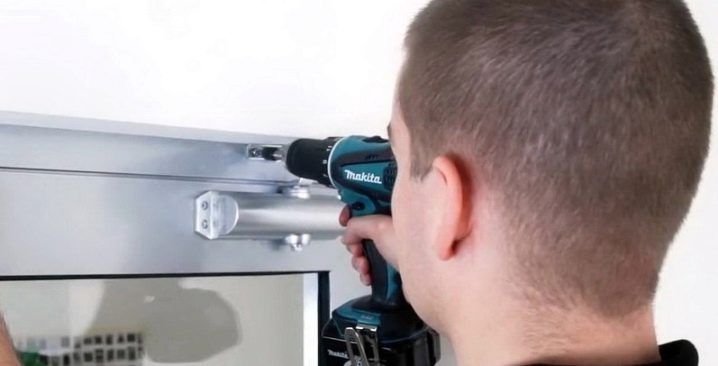
The first of the two screws defines the overall speed range - it is 15-180 degrees. With the help of the second, you can adjust the stroke more precisely. Typically, the range here is 0 to 15 degrees. When adjusting, the screw turns against and along the threaded joint.
Excessive forces during the rotation of the regulating elements can lead to their unscrewing and falling out with depressurization of the internal structure.
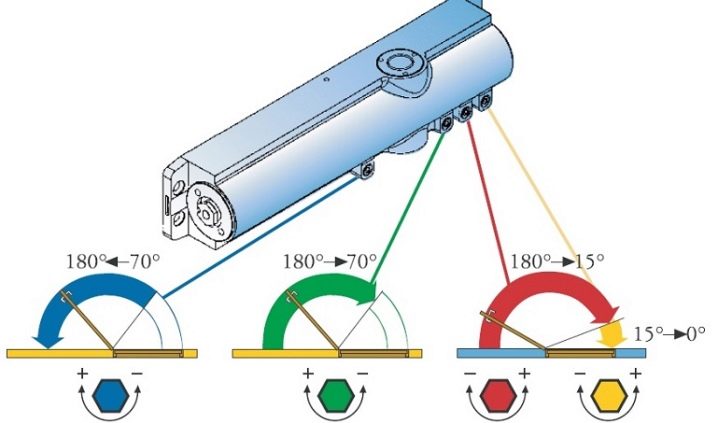
When done correctly, the speed of opening and closing the door should be approximately equal, without effort, pops and gaps.
When operating the sash with a door closer, it is necessary to avoid excessive loads on the leaf, as well as to exclude the use of mechanical barriers or props.
Installing a door closer on an entrance metal door is an important and necessary matter, which makes it possible to make the process of tightly closing the sash automatic. Observing simple recommendations, even a person without a lot of practical experience can cope with the task. And the heaviest or most massive doors will close without squeaks and noises.
For what you need to know when buying and installing a door closer, see the following video.













The comment was sent successfully.